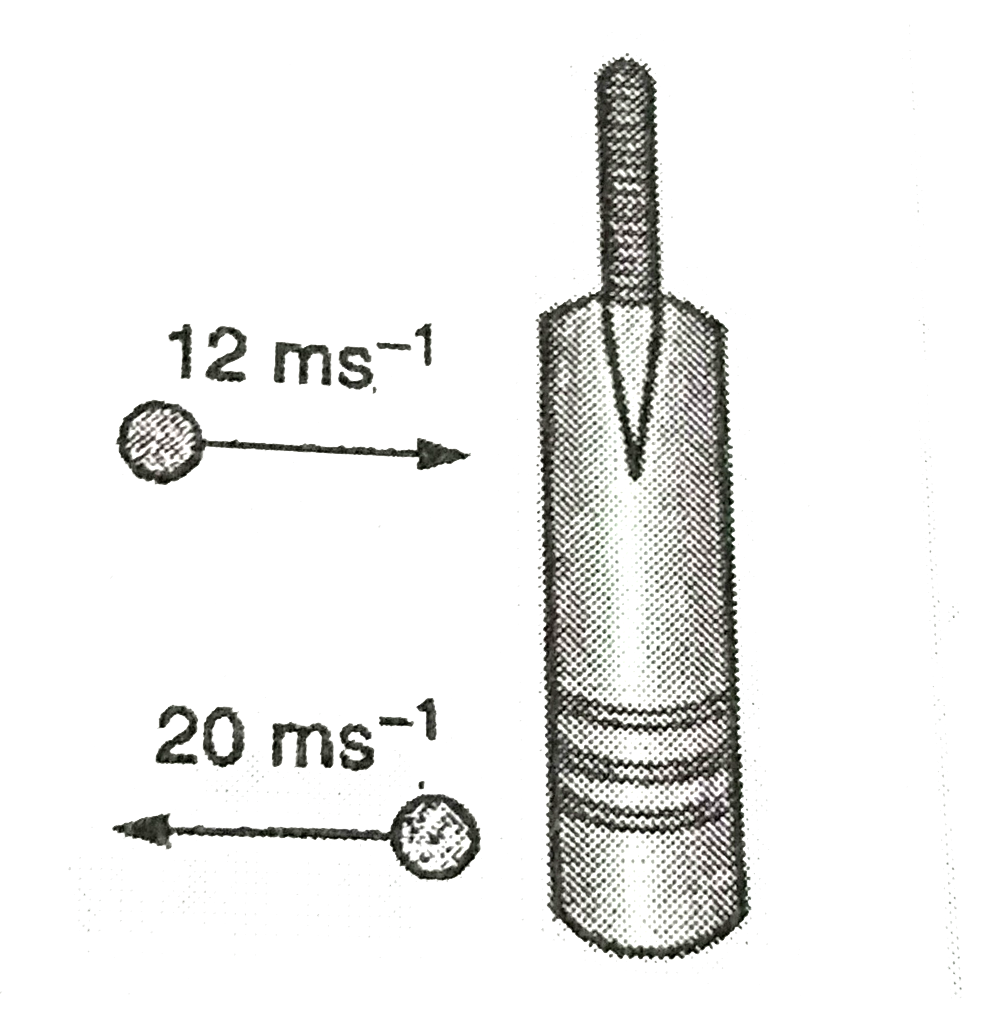A cricket ball of 0.5 kg is moving with a velocity of 100ms−1. The wavelength associated with its motion is :
1/100cm
65×10−34m
1.32×10−35m
6.6×10−28m
The correct Answer is:C
To find the wavelength associated with the motion of a cricket ball using the de Broglie wavelength formula, we can follow these steps:
1. Identify the Given Values:
- Mass of the cricket ball (m) = 0.5 kg
- Velocity of the cricket ball (v) = 100 m/s
- Planck's constant (h) = 6.626×10−34 Joule·s
2. Write the de Broglie Wavelength Formula:
The de Broglie wavelength (λ) is given by the formula:
λ=hmv
3. Substitute the Values into the Formula:
Substitute the values of h, m, and v into the formula:
λ=6.626×10−340.5×100
4. Calculate the Denominator:
First, calculate the product of mass and velocity:
mv=0.5×100=50 kg⋅m/s
5. Calculate the Wavelength:
Now, substitute this value back into the equation for λ:
λ=6.626×10−3450
λ=1.3252×10−35 meters
6. Round the Answer:
Rounding the answer to two decimal places gives:
λ≈1.32×10−35 meters
Final Answer:
The wavelength associated with the motion of the cricket ball is approximately 1.32×10−35 meters.
---
- Mass of the cricket ball (m) = 0.5 kg
- Velocity of the cricket ball (v) = 100 m/s
- Planck's constant (h) = 6.626×10−34 Joule·s
The de Broglie wavelength (λ) is given by the formula:
λ=hmv
Substitute the values of h, m, and v into the formula:
λ=6.626×10−340.5×100
First, calculate the product of mass and velocity:
mv=0.5×100=50 kg⋅m/s
Now, substitute this value back into the equation for λ:
λ=6.626×10−3450
λ=1.3252×10−35 meters
Rounding the answer to two decimal places gives:
λ≈1.32×10−35 meters
The wavelength associated with the motion of the cricket ball is approximately 1.32×10−35 meters.
Topper's Solved these Questions
- BOOK - VMC MODULES ENGLISHCHAPTER - ATOMIC STRUCTUREEXERCISE - LEVEL - 250videos
ATOMIC STRUCTURE
- BOOK - VMC MODULES ENGLISHCHAPTER - ATOMIC STRUCTUREEXERCISE - LEVEL - 2 ( Numerical value type for JEE Main )16videos
ATOMIC STRUCTURE
- BOOK - VMC MODULES ENGLISHCHAPTER - ATOMIC STRUCTUREEXERCISE - Level - 0 (Long Answer Type (5 Marks))11videos
ATOMIC STRUCTURE
- BOOK - VMC MODULES ENGLISHCHAPTER - AMINESEXERCISE - IN CHAPTER EXERCISE H10videos
AMINES
- BOOK - VMC MODULES ENGLISHCHAPTER - CHEMICAL BONDING & CHEMICAL STRUCTURE EXERCISE - IMPECCABLE50videos
CHEMICAL BONDING & CHEMICAL STRUCTURE
Similar Questions
The velocily associated wiih a proton moving in a potential difference of 1000 V is 4.37×105ms−1. If the böckey ball of mass 0.1 kg is moving with this velocity, calculate the wavelength associated with this velocity.
View SolutionA particle of mass 1031kg is moving with a velocity equal to 105ms−1. The wavelength of the particle is equal to
View Solution
Knowledge Check
- Question 1 - Select One
A body of mass 10mg is moving with a velocity of 100ms−1. The wavelength of the de Broglie wave associated with it would be
A6.626×10−7mB6.626×10−34mC6.626×10−4mD6.626×10−35m - Question 2 - Select One
The wavelength of an electron moving with velocity of 107ms−1 is
A7.27×10−11mB3.55×10−11mC8.25×10−4mD1.05×10−16m
A 0.66kg ball is moving wih a speed of 100m/s. The associated wavelength will be.
View SolutionA ball of mass 0.5 kg is moving with a velocity of 2ms−1. It if subjected to a force of x Newton for 2s. Because of this force, the ball moves with a velocity of 3ms−1 . The value of x is :
View SolutionA cricket ball of mass 150 kg is moving with a velocity of 12m/s and is hit by a bat so that ball is turned back with a velocity of 20m/s . The force of the blow acts for 0.01 s on the ball . Find the average force exerted by the bat on the ball.
View SolutionA cricket ball of mass 150 g is moving with a speed of 12ms−1 and is hit by a bat so that the ball is turned back with velocity of 20ms−1 if duration of contact between bat and ball is 0.01 s then:
 View Solution
View SolutionA ball of mass 200g is moving with a velocity of 10msec−1 . If the error in measurement of velocity is 0.1%, the uncertainty in its position is :
View SolutionA body of mass x kg is moving with a velocity of 100ms−1 . Its de-Broglie wavelength is 6.62×10−35m . Hence, x is: (h=6.62×10−34Js)
View Solution
